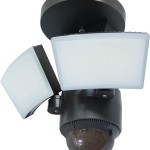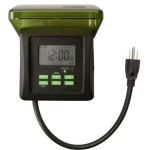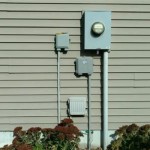```html
Total Outdoor Lighting: Enhancing Safety, Security, and Ambiance
Outdoor lighting is an integral aspect of modern property design, extending beyond mere functionality to encompass safety, security, aesthetics, and even property value. A comprehensive approach, often referred to as "Total Outdoor Lighting," considers all these factors, creating a harmonious and well-lit environment that enhances the overall living experience. This article explores the key elements of Total Outdoor Lighting, detailing the different types of fixtures, their applications, and the considerations necessary for a successful implementation.
The strategic placement of outdoor lighting can significantly impact the usability of outdoor spaces. Patios, decks, and walkways become safer and more inviting after dark, allowing for extended enjoyment of these areas. Furthermore, a well-lit property deters potential intruders, providing an added layer of security for residents. Beyond the practical aspects, outdoor lighting can dramatically improve the curb appeal of a home, highlighting architectural features and landscaping elements, thereby increasing its overall value.
Understanding Light Fixture Types and Their Applications
Choosing the right light fixtures is crucial for achieving optimal outdoor lighting. Different types of fixtures are designed for specific purposes, and selecting the appropriate options will ensure both functionality and aesthetic appeal. There are several common types of outdoor lighting fixtures.
Path Lighting: Path lights are typically low-level fixtures designed to illuminate walkways, driveways, and garden paths. They provide a safety component by preventing trips and falls, as well as adding a subtle ambience. Options range from traditional bollard-style lights to more decorative designs, often utilizing low-voltage LED technology for energy efficiency.
Flood Lighting: Flood lights are high-intensity fixtures designed to illuminate large areas, such as backyards, driveways, or building facades. They are often used for security purposes, as they can deter intruders and provide enhanced visibility. Flood lights can be motion-activated or controlled manually, offering flexibility in their application.
Spot Lighting: Spot lights are focused beams of light used to highlight specific features, such as trees, sculptures, or architectural details. They add drama and visual interest to the landscape, creating focal points and enhancing the overall aesthetic appeal. Spot lights can be adjusted to control the beam angle and intensity, allowing for customized lighting effects.
Deck and Patio Lighting: This category includes a variety of fixtures designed for illuminating decks, patios, and other outdoor living spaces. Options include string lights, post lights, recessed lighting, and wall-mounted sconces. The goal is to create a comfortable and inviting atmosphere for relaxation and entertaining.
Security Lighting: Security lighting is specifically designed to deter crime and enhance safety. This often includes motion-activated flood lights, as well as strategically placed lights around entry points and vulnerable areas. The brightness, range, and placement of security lights are critical for maximizing their effectiveness.
Landscape Lighting: This encompasses a broad range of fixtures used to illuminate gardens, lawns, and other landscaped areas. The objective is to accentuate the natural beauty of the landscape and create a visually appealing nighttime environment. Techniques include uplighting, downlighting, and shadowing, which can be used to create depth, texture, and drama.
The choice of light fixture also depends on the desired style and the existing architectural design of the property. Fixtures are available in a variety of materials, finishes, and designs, ranging from traditional to contemporary. Selecting fixtures that complement the overall aesthetic of the property is essential for achieving a cohesive and visually appealing outdoor lighting scheme.
Key Considerations for Planning Your Outdoor Lighting System
Planning a Total Outdoor Lighting system requires careful consideration of several factors to ensure that the final result meets both functional and aesthetic requirements. Improper planning can lead to ineffective lighting, excessive energy consumption, and potential light pollution.
Light Levels and Distribution: Determining the appropriate light levels for different areas is crucial for creating a comfortable and functional environment. Too much light can be harsh and overwhelming, while too little light can compromise safety and security. The distribution of light is also important; the goal should be to create even illumination without excessive glare or dark spots. Light meters can be used to measure light levels in different areas and ensure that they are within acceptable ranges. A professional lighting designer can assist in creating a lighting plan that optimizes light levels and distribution.
Energy Efficiency: Energy efficiency is a major consideration in modern outdoor lighting design. Traditional incandescent and halogen bulbs have been largely replaced by more energy-efficient LED (light-emitting diode) technology. LED lights consume significantly less energy and have a much longer lifespan, resulting in lower electricity bills and reduced maintenance costs. Furthermore, LED lights are available in a wide range of color temperatures, allowing for customized lighting effects. Using solar-powered lights is another environmentally friendly option for certain applications, particularly in areas where wiring is difficult or expensive. Motion sensors and timers can also be used to reduce energy consumption by automatically turning lights on and off as needed.
Light Pollution: Light pollution is the excessive or misdirected artificial light that spills into the environment. It can disrupt ecosystems, interfere with astronomical observations, and even affect human health. To minimize light pollution, it is important to use shielded light fixtures that direct light downward, rather than upward or outward. Reducing the overall amount of light and using lower color temperatures can also help to mitigate light pollution. The International Dark-Sky Association (IDA) provides resources and guidelines for responsible outdoor lighting practices.
Safety and Security: Safety and security are paramount considerations in outdoor lighting design. Walkways, driveways, and entry points should be well-lit to prevent accidents and deter intruders. Motion-activated lights can provide an added layer of security by automatically illuminating when someone approaches the property. The placement of security lights should be strategic, focusing on vulnerable areas such as doors, windows, and hidden pathways.
Wiring and Installation: Proper wiring and installation are essential for ensuring the safety and reliability of an outdoor lighting system. All electrical work should be performed by a qualified electrician in accordance with local building codes. Underground wiring should be properly buried and protected from damage. Low-voltage lighting systems are generally safer and easier to install than high-voltage systems, making them a popular choice for residential applications.
Maintaining Your Outdoor Lighting System
Regular maintenance is essential for keeping an outdoor lighting system functioning properly and extending its lifespan. Simple tasks, such as cleaning fixtures and replacing bulbs, can make a significant difference in the performance and appearance of the system.
Cleaning Fixtures: Over time, outdoor light fixtures can accumulate dirt, dust, and debris, which can reduce their brightness and efficiency. Cleaning fixtures regularly with a soft cloth and mild detergent can help to maintain their performance and appearance. It is important to follow the manufacturer's instructions for cleaning specific types of fixtures.
Replacing Bulbs: Bulbs will eventually burn out and need to be replaced. When replacing bulbs, be sure to use the correct type and wattage for the fixture. LED bulbs have a much longer lifespan than traditional bulbs, but they will eventually need to be replaced as well. It is a good idea to keep a supply of replacement bulbs on hand so that you can quickly replace any that burn out.
Inspecting Wiring: Periodically inspect the wiring for any signs of damage or wear. Look for frayed wires, loose connections, or corroded terminals. If you notice any problems, have them repaired by a qualified electrician as soon as possible. Damaged wiring can pose a safety hazard and can also lead to malfunctions in the lighting system.
Trimming Vegetation: Overgrown vegetation can block light and reduce the effectiveness of outdoor lighting. Trim trees, shrubs, and other plants regularly to ensure that they do not obstruct the light fixtures. This will also help to prevent damage to the fixtures from rubbing against branches or leaves.
Adjusting Fixtures: Over time, light fixtures can shift or become misaligned. Periodically check the alignment of the fixtures and adjust them as needed to ensure that they are still providing the desired level of illumination. This is particularly important for spot lights and other directional fixtures.
By following these maintenance tips, property owners can ensure that their outdoor lighting system continues to provide safety, security, and aesthetic appeal for years to come. A well-maintained system not only enhances the beauty of the property but also contributes to its overall value and curb appeal.
```
Pro Led Outdoor Landscape Lighting Kit Four Spot Lights 40watt Power Pack Photocell Timer 80 Foot Cable

Pro Led Outdoor Landscape Lighting Spot Path Kit 4 Lights 8 100watt Power Pack Photocell Mechanical Timer 160 Foot Cable Complete Kits

Pro Led Outdoor Landscape Lighting 12 Spot Light Kit 100watt Power Pack Photocell Mechanical Timer 160 Foot Cable

Total Lighting Supply Recessed Track Outdoor Led Fluorescent Bulk Transformers

Light Broe Led Outdoor Landscape Lighting Hat Path Warm White Most Popular

Smart Wifi Compatible 100watt Led Outdoor Low Voltage Landscape Lighting Transformer Bundle Options

Total Lighting Supply Recessed Track Outdoor Led Fluorescent Bulk Transformers

Led S220 Vg Verde Green Outdoor Landscape Lighting Flower Path Light Low Voltage Warm White

Led Outdoor Landscape Lighting A Beautiful New York Home Total Blog

Hinkley Lighting And Ceiling Fans Landscape
Related Posts







